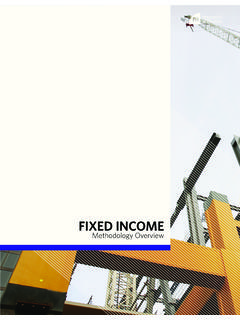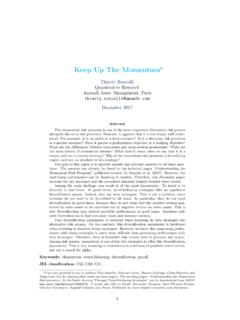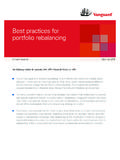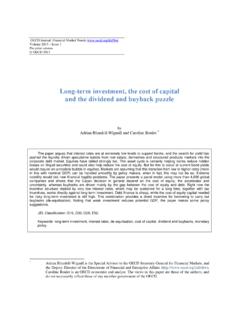Transcription of Yes. It’s a Bubble. So What? - researchaffiliates.com
1 Yes. It s a Bubble. So What? By Rob Arnott, Bradford Cornell, PhD, California Institute of Technology, and Shane Shepherd, PhD The market can stay irrational longer than you can stay solvent. 1 The relentless rise in the US stock market since its low in 2009 has been dramatic. US stock market valuations now exceed all historical valuation levels, except for those hit at the peak of the dot-com craze. This raises an obvious question for investors: Today, in early 2018, and has been the case over the last year, is the US stock market in another bubble? Yes. The more important question then April 2018 March 2018 Unlocking the Performance Potential in ESG InvestingFeifei Li, PhD, Katy Sherrerd, PhD, and Jonathan Treussard, PhDMarch 2018 When Value Goes GlobalBrandon Kunz and Michele Mazzoleni, PhDJanuary 2018 CAPE Fear: Why CAPE Naysayers Are WrongRob Arnott, Vitali Kalesnik, PhD, and Jim Masturzo, CFAKey Points1.
2 The word bubble is tossed around with abandon. We offer a rigorous definition for the word, and then test the definition against current markets. 2. Several bubbles are evident today, most importantly a tech bubble, eerily similar to albeit narrower than the new economy dogma of the 2000 2001 dot-com bubble. We also see a bubble brewing in cryptocurrencies and micro-bubbles in select stocks such as Investors can take action to protect their portfolios and potentially benefit from the bubble by reducing exposure to bubble assets; seeking out exposure to anti-bubbles, where assets or markets are irrationally cheap; investing in value-based smart beta strategies especially in European and emerging markets; and avoiding capitalization-weighted index funds, which inherently overweight the bubble Finally, we must be patient.
3 Bubbles typically continue longer than expected, until they suddenly READINGCONTACT USWeb: : + : + : 2018 . Arnott, Cornell, and Shepherd . Yes. It s a Bubble. So What? : How should investors react? We recommend four actions investors can take in response to the current bubble conditions, which should actually allow investors to benefit from the bubble. What Constitutes a Bubble?To address these questions, let s begin by offering a defi-nition of the word bubble. We all hear the word thrown around carelessly and often, but it lacks a formal defini-tion. Let s try. Ockham s Razor guides us: Keep it simple. We define a bubble as a circumstance in which asset prices 1) offer little chance of any positive risk premium relative to bonds or cash, using any reasonable projection of expected cash flows, and 2) are sustained because investors believe they can sell the asset to someone else for a higher price tomorrow, with little regard for the underlying fundamen-tals.
4 Notably, there are markets in which few, if any, buyers care about discounted future cash flows to value the asset. In order to identify a market bubble, we need to strongly believe our definition applies. Borderline calls don t academics, especially adherents of neoclassical finance, will dismiss our arguments. After all, for every seller, there s a buyer because some investors like an asset at the prevailing price, the market must be efficient! Impressive economic models, which include variants on investor utility or additional sources of risk, have been developed to allow a risk premium model to explain bubbles, crashes, and puzzles, such as excessive volatility in price-to-dividend efficient market hypothesis has been stretched to fit observed market behavior, by allowing cross-sectional and intertemporal variations in risk premia.
5 Prices adjust until the marginal investor becomes willing to assume both market risk and assorted factor-related risks. The market s willingness to bear these risks varies over time. In this view, high valuation levels don t represent mispricing; the risk premia just happen to be sufficiently low so as to justify the prices. These models benefit from being constructed on a post hoc basis to be consistent with market events. Fair enough, because a useful model needs to be consistent with observable data. But the models often shift problems in the observable data, such as puzzlingly high volatility in price-to-dividend ratios, into unobservable nooks and crannies.
6 In other words, perhaps bubble-like prices can be perfectly rational as long as we accept curiously high volatility in the curvature of investors utility functions. Sadly, these hypotheses and models lack a key attribute of scientific method: they are unfalsifiable. No practical differ-ence exists between an inefficient market and an efficient market in which risk premia vary in this said, we do have some observations on investor behav-ior and expectations. Vernon Smith won the Nobel Prize for his groundbreaking work in experimental economics, including experiments that showed bubbles and crashes occurring in normal economic settings.
7 Smith showed that even though investors share the same informa-tion, they do not come to the table with common expec-tations. As a result, even when market participants are all aware of a formula-based value for an asset, they will overpay or underpay relative to a known fair valuation. The academic phrasing Smith, Suchanek, and Williams (1988) used agent uncertainty about the behavior of others can more commonly manifest as the self-evident presumption of a greater fool. True, the students in their experiments were trading in laboratory settings, not real markets, but the studies have been repeated with seasoned investment professionals, with similar results.
8 As Smith later remarked (Altman, 2002): It took me several years to realize that the textbooks were wrong, and the people in my class were correct. More recent research shows how investor expectations around greater fools and future price movements are strongly influenced by recent market returns, further encouraging the formation of bubbles. Greenwood and Shleifer (2013) studied six sources of survey data of inves- We believe tech stocks are in another bubble, with the potential to impact investable asset classes far beyond the tech sector. April 2018 . Arnott, Cornell, and Shepherd . Yes. It s a Bubble. So What? expectations for future market returns.
9 They showed that investors behave with strong extrapolative tenden-cies: following periods of strong market returns, investors become used to strong performance and extrapolate it into their expectations of future market returns. For exam-ple, a Gallup survey showed that investors increasing their expected market return from 12% in mid-1998 to 16% by early 2000. By the end of 2002 this number had fallen to 6%. Under certain conditions ( , following times of high prices and low yields), investors will raise their estimates of future market returns. Of course, this is exactly the oppo-site response of what a time-varying risk premium model or an even simpler Shiller PE (price-to-earnings) valuation tool would suggest.
10 Furthermore, Greenwood and Shleifer showed that investors put their money where their mouths are: mutual fund flows into the equity markets correlate quite strongly with the investor expectations captured by the surveys. Clearly, investors allow their return expecta-tions to drift from reasonable models of fair valuation, and instead expect future buyers to pay even higher prices for stocks with already sky-high valuations, which, of course, they do until they don t and the market s a Bubble Because ..Our view is that the market constantly creates single-asset micro-bubbles, isolated examples of extreme mispricing which require severe right-tail outcomes to justify the asset s price.








